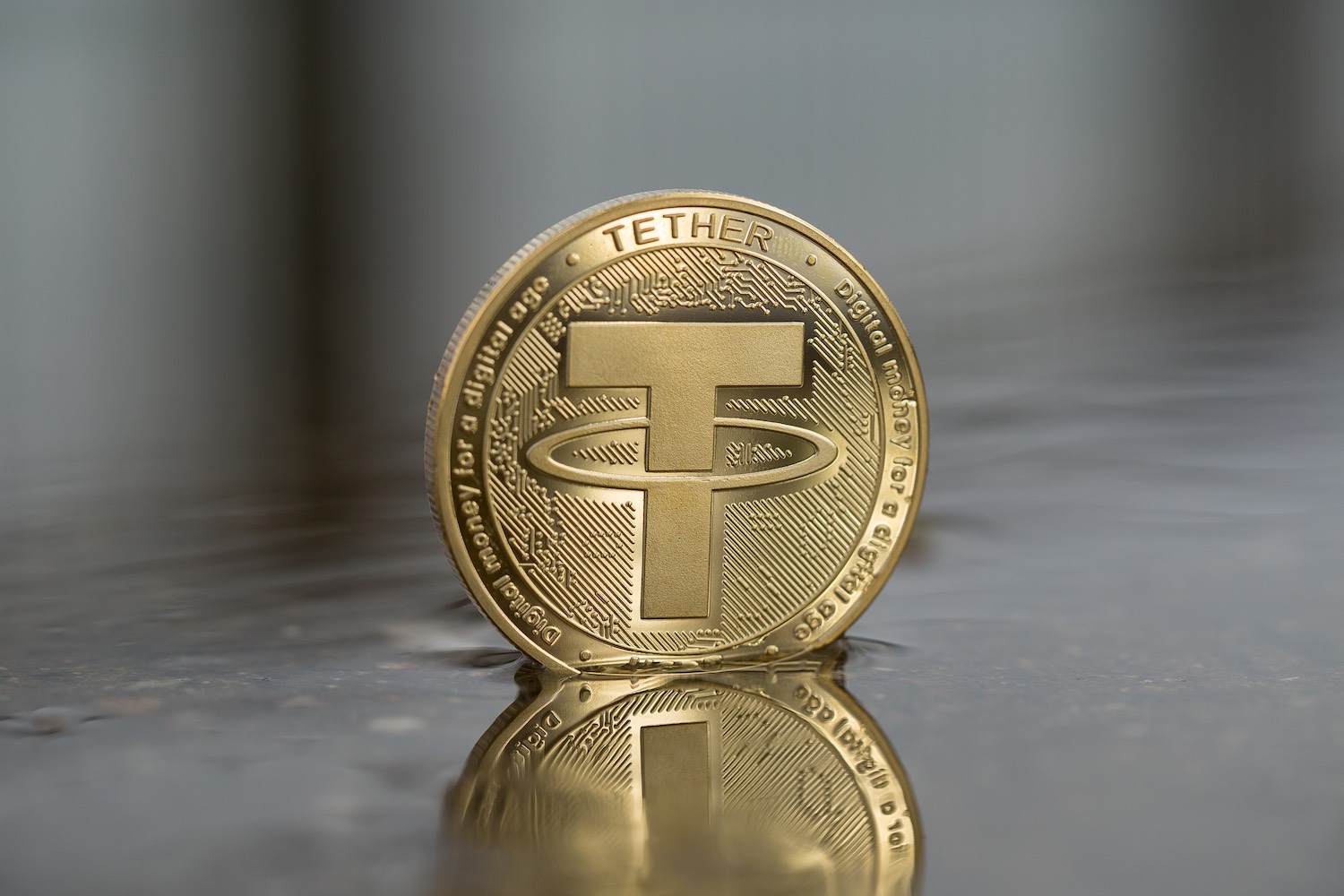Stablecoin Issuer Tether Reports $7 Billion Surplus in Latest Audit
03.02.2025 10:00 2 min. read Alexander Zdravkov
A recent audit has confirmed that Tether, the issuer of the USDT stablecoin, holds billions in surplus reserves, strengthening its financial position.
The report, conducted by accounting firm BDO Global, assessed Tether’s holdings as of December 31, 2024, and found that the company’s assets exceeded its liabilities by over $7 billion.
According to the audit, Tether’s total assets amount to approximately $143.7 billion, while its liabilities—primarily in the form of issued USDT—stand at around $136.6 billion. This surplus suggests that the company has a significant financial cushion to maintain the stability of its dollar-pegged cryptocurrency.
The breakdown of Tether’s holdings reveals that a substantial portion of its reserves—around $118.3 billion—is held in cash and cash equivalents, with U.S. Treasury bills making up the majority. In addition to these highly liquid assets, Tether’s reserves include $5.3 billion in precious metals, $7.8 billion worth of Bitcoin, $8.1 billion in secured loans, $14 million in corporate bonds, and $3.9 billion in various other investments.
READ MORE:

XRP’s Next Move Could Be Its Biggest Yet
Tether’s financial transparency has been a subject of controversy in the past. In 2022, a group of investors accused the company of failing to properly back its stablecoin, leading to legal action that resulted in a court order demanding evidence of sufficient reserves. At the time, Tether pushed back against the lawsuit, calling the demands “overbroad” and arguing that they placed an undue burden on the company.
To address concerns about its reserves, Tether now provides daily updates on its financial standing through a transparency page on its website. These reports are intended to assure investors and regulators that USDT remains fully backed. With the latest audit confirming a significant surplus, Tether is likely to use the findings to reinforce its credibility and defend against ongoing skepticism surrounding stablecoin reserves.
-
1
Trump Threatens Trade Retaliation After EU Hits Google With €3B Fine
06.09.2025 17:00 2 min. read -
2
MicroStrategy Stock Slips as Saylor’s Dividend Remarks Stir Debate
20.09.2025 20:44 6 min. read -
3
Ripple’s RLUSD Stablecoin Integrated Into Securitize’s Tokenization Network
24.09.2025 9:00 2 min. read -
4
U.S. Stocks Hit Records as Fed Rate Cut Sparks Rally Across Sectors
19.09.2025 0:07 6 min. read -
5
Inside the Strategy Paradox: Tech Firm or Bitcoin vault?
18.09.2025 16:00 6 min. read
Strategy Secures Tax Relief: No Corporate Minimum Tax on Bitcoin Holdings After IRS Interim Guidance
Crypto-linked equities have carved out a unique position in global markets, offering exposure to digital assets without the direct volatility of token trading.
BNB Chain’s X Account Hacked in Phishing Attack, Restored After Small Loss
The official BNB Chain X account, with nearly four million followers, was hacked on Wednesday, leading to the spread of phishing links targeting cryptocurrency wallets.
Trump-Backed World Liberty Financial Eyes Tokenized Commodities and Stablecoin Integration
World Liberty Financial, the crypto project backed by Donald Trump Jr. and linked to former U.S. President Donald Trump, is moving deeper into tokenized assets, including commodities and financial instruments.
Strategy Stock Faces Dilution Risks Amid Analyst Split
Strategy Inc. (NASDAQ: MSTR) continues to attract significant attention on Wall Street as the company doubles down on its identity as a Bitcoin proxy stock.
-
1
Trump Threatens Trade Retaliation After EU Hits Google With €3B Fine
06.09.2025 17:00 2 min. read -
2
MicroStrategy Stock Slips as Saylor’s Dividend Remarks Stir Debate
20.09.2025 20:44 6 min. read -
3
Ripple’s RLUSD Stablecoin Integrated Into Securitize’s Tokenization Network
24.09.2025 9:00 2 min. read -
4
U.S. Stocks Hit Records as Fed Rate Cut Sparks Rally Across Sectors
19.09.2025 0:07 6 min. read -
5
Inside the Strategy Paradox: Tech Firm or Bitcoin vault?
18.09.2025 16:00 6 min. read
U.S. Senator Bill Hagerty believes stablecoin issuers are on track to become some of the largest holders of U.S. Treasury debt as the regulatory landscape for digital dollar-pegged assets evolves.
The stablecoin market has soared past $200 billion, marking a new all-time high and fueling speculation about a potential cryptocurrency rally.
The stablecoin market has reached an unprecedented milestone, with monthly on-chain volume surpassing $1.5 trillionfor the first time in history, according to new data from blockchain analytics firm Sentora (formerly IntoTheBlock).
Efforts to create a clear legal framework for U.S. stablecoins took a hit this week after the Senate failed to push forward a key piece of legislation.
A recent Financial Stability Board (FSB) report warns of significant risks linked to the increasing use of global stablecoins (GSCs) in emerging markets and developing economies (EMDEs).
As fears of U.S. tariffs loom, cryptocurrency investors are showing caution despite a significant increase in stablecoin supply.
Citi Research predicts that the cryptocurrency market will continue its rapid growth in 2025, with stablecoins and digital asset exchange-traded funds (ETFs) playing pivotal roles in driving adoption.
A new chart from Bitwise Asset Management has sent shockwaves through the financial world, showing that stablecoin transaction volumes are now rivaling—and in some cases surpassing—Visa’s global payments.
In December, the cryptocurrency industry experienced a notable increase in on-chain revenue, with stablecoins playing a dominant role.
A growing wave of financial institutions is turning to stablecoins, not just for cost-cutting—but as a cornerstone of future growth.
Stablecoins like USDT have become vital in Latin America, assisting people in managing ongoing economic difficulties.
The Monetary Authority of Singapore (MAS) has expressed confidence in the growing potential of stablecoins as a future payment method.
Stablecoins are no longer just a crypto-native tool—they’re reshaping financial access, payments, and even central banking dynamics.
Once a niche tool for crypto traders, stablecoins have evolved into heavyweight players in global finance - now holding more U.S. Treasury debt than countries like Germany, South Korea, and the UAE.
Tariffs imposed by the U.S. and subsequent retaliatory measures have created a market environment full of uncertainty, yet many experts view these actions as a negotiation tactic, believing the impact on businesses and consumers will be manageable in the long run.
The rise of stablecoins has created a new debate in the payments world: can blockchain-based money eventually compete with credit cards?
The total market capitalization of stablecoins, excluding algorithmic ones, reached an all-time high of more than $168 billion over the weekend.
FXGuys presale has raised over $3 million, and it's ready to yield 10x significant returns for investors .
UBS has issued a stark warning to investors, flagging stagflation as a looming economic threat.
Staking could play a pivotal role in enhancing the appeal of U.S.-based Ethereum exchange-traded funds (ETFs), according to Tom Wan, a former crypto analyst at 21.co.

